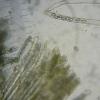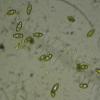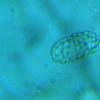
21-12-2025 21:32
Pol DebaenstHello, Garden, Burgweg 19, Veurne, BelgiumOn 10/1

21-12-2025 21:40
Isabelle CharissouBonjour, j'aimerais connaitre les références de

21-12-2025 21:31
Pol DebaenstHello, Garden, Burgweg 19, Veurne, BelgiumOn 10/1

21-12-2025 21:31
Pol DebaenstHello, Garden, Burgweg 19, Veurne, BelgiumOn 10/1

20-12-2025 23:08
Patrice TANCHAUDBonsoir, récolte sur sol sablonneux dans l'arri�

21-12-2025 09:32
Hello.A tiny ascomycete found embedded in wood in

20-12-2025 15:47
Mirek GrycHi.These grew on pine wood that was heavily covere
I was picking mushrooms and when returning noticed these on the way.
I did not see them on the way to woods, so they must have grown while I was there ;)
These did not reach 2 cm width.
The spores are about 14-20x 8-10- and with some kind of ornamentation.
The asci are about 250-300x 11-12 and paraphyses (width about 6) are not longer than asci.
Once again Nordic Macromycetes 1 did not help me to get a determination, which I could be satisfied.
Marja
in my opinión it is a species in the P. badia group, due to the dark tones and brownish spores with tendency to be biguttulate. The asci should be unrestrictedly amyloid in Melzer.
It would be helpful to have more details about the spore ornamentation (reticulate, warty, etc.) and to check if the ascoma bleeds bluish juice when cut with a razor blade in the hymenium.
Cheers,
Ibai.
?
Peziza badia as I know is bigger, often in groups and grows much ealier, in summer. Now it is autumn here and this is much smaller and grows separately.
P. badia is a group species?
When cut, practicly no juice was bleeding.
I'm a bit busy now, but will try to get a better view to the ornamentation later.
Marja
Ps: there were 1-3 guttules in the spores and sometimes some smaller, too

Hi again,
I meant that your Peziza belongs to a group of species in the neighbourhood of Peziza badia (P. depressa, P. badiofusca, P. badioconfusa, P. saniosa, etc..) sharing a dark brown colour, paraphyses with dark content, predominantly biguttulate spores of high ornamentation, a potential ectomycorrhizal habit and non-restricted amyloid reaction of the asci in Melzer´s, as discussed by Hansen et al. (Mol. Phyl. Evol. 36:1-23, as P. depressa-Ruhlandiella clade).
This was just a small clue... I guess we need to see the spore ornamentation to be certain about the species.
Cheers,
Ibai.
?





